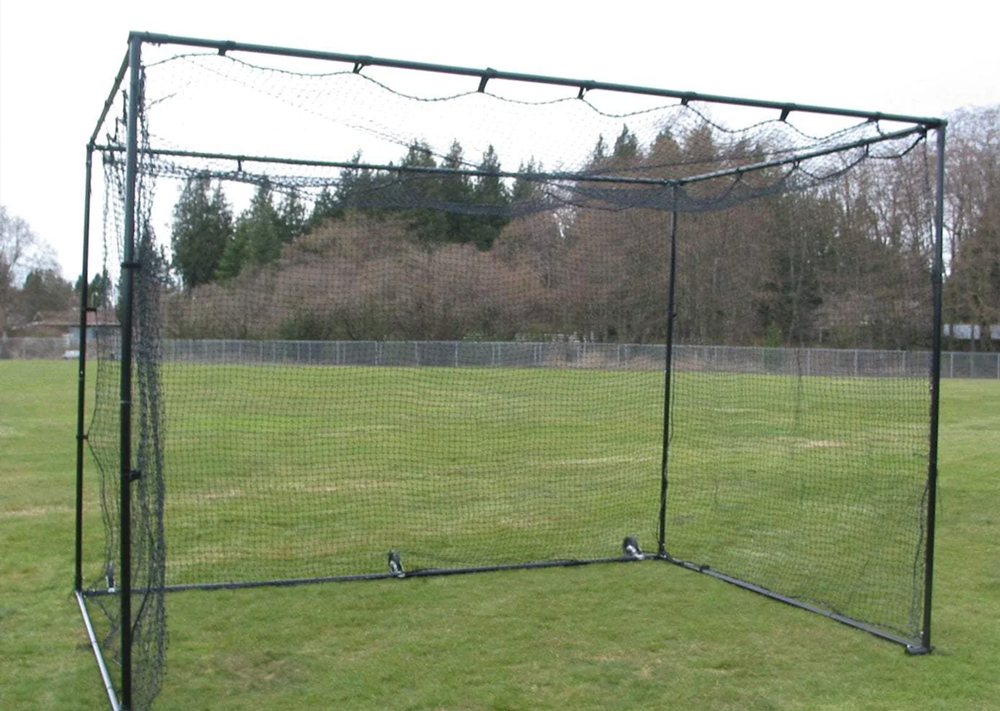A well-constructed batting cage is a baseball player’s sanctuary for honing their swing, perfecting their pitch, and mastering their skills. To ensure the safety of players and the longevity of your cage, selecting the right baseball backstop is essential. Backstops not only protect against stray balls but also contribute to the overall functionality of the cage. In this guide, we’ll explore the factors to consider when choosing baseball backstops for batting cages, including materials, size, and installation options. Whether you’re a coach, facility manager, or a dedicated player, understanding these factors will help you create the perfect practice environment.
1. Backstop Materials
Features: Backstops come in a variety of materials, each with its advantages and disadvantages.
- Netting: Netting is the most common material for backstops. It’s durable, lightweight, and allows for excellent visibility. Look for high-quality, UV-resistant netting to withstand outdoor conditions.
- Chain Link: Chain link backstops are robust and provide additional protection against high-velocity balls. They are a good choice for heavy-use facilities but may obstruct visibility.
- Vinyl-Coated Polyester: This material offers durability and weather resistance. It’s often used in premium backstops for added strength.
Pros: Choose materials based on durability, visibility, and specific usage needs.
2. Backstop Size
Features: The size of your backstop should match the dimensions of your batting cage. Measure the width and height of the cage to ensure proper coverage. For added safety, consider a backstop that extends slightly beyond the cage boundaries.
Pros: Proper sizing ensures complete coverage and protection against stray balls.
3. Installation Options
Features: Backstops can be installed in various ways, depending on your needs and budget.
- Freestanding Backstops: These stand-alone backstops are versatile and can be placed anywhere. They are easy to move but may require additional weights or anchors for stability.
- Ceiling-Mounted Backstops: Ceiling-mounted backstops are suspended from overhead structures. They are ideal for indoor facilities and save floor space. Ensure your facility has adequate structural support for this option.
- Wall-Mounted Backstops: Wall-mounted backstops are attached to existing walls or structures. They are a space-saving option but require a sturdy wall for installation.
Pros: Choose the installation method that suits your facility’s layout and requirements.
4. Padding and Safety Features

Features: Backstops with added padding provide extra protection against rebounds and impact. Look for backstops that include padding options for increased safety. Some backstops also have target zones for practicing pitch accuracy.
Pros: Padding and safety features enhance player protection and overall functionality.
5. Weather Resistance
Features: If your batting cage is exposed to the elements, choose a backstop that is weather-resistant. UV-resistant netting or vinyl-coated polyester materials are ideal for outdoor use.
Pros: Weather-resistant backstops maintain their durability and appearance over time.
6. Budget Considerations
Features: Backstops come in various price ranges, so it’s essential to establish a budget before making a selection. Consider the long-term value and durability of the backstop when budgeting.
Pros: Setting a budget helps you find a backstop that meets your needs without overspending.
Conclusion
Choosing the right baseball backstops for your batting cage is essential for safety, functionality, and overall performance. By considering factors like materials, size, installation options, padding, and budget, you can select a backstop that meets your specific needs. Whether you’re managing a professional facility or setting up a backyard cage, the right backstop ensures that you can practice and play with peace of mind, focusing on perfecting your skills without worrying about stray balls or safety concerns.
